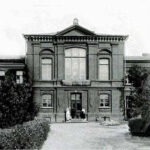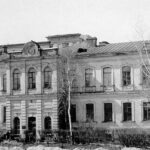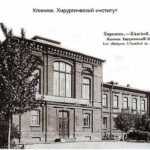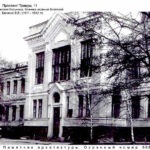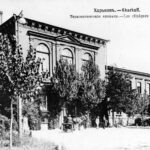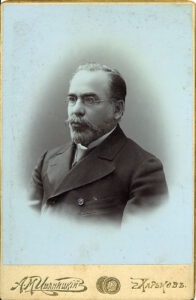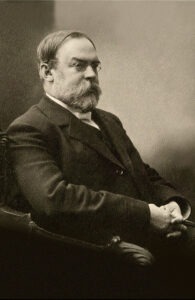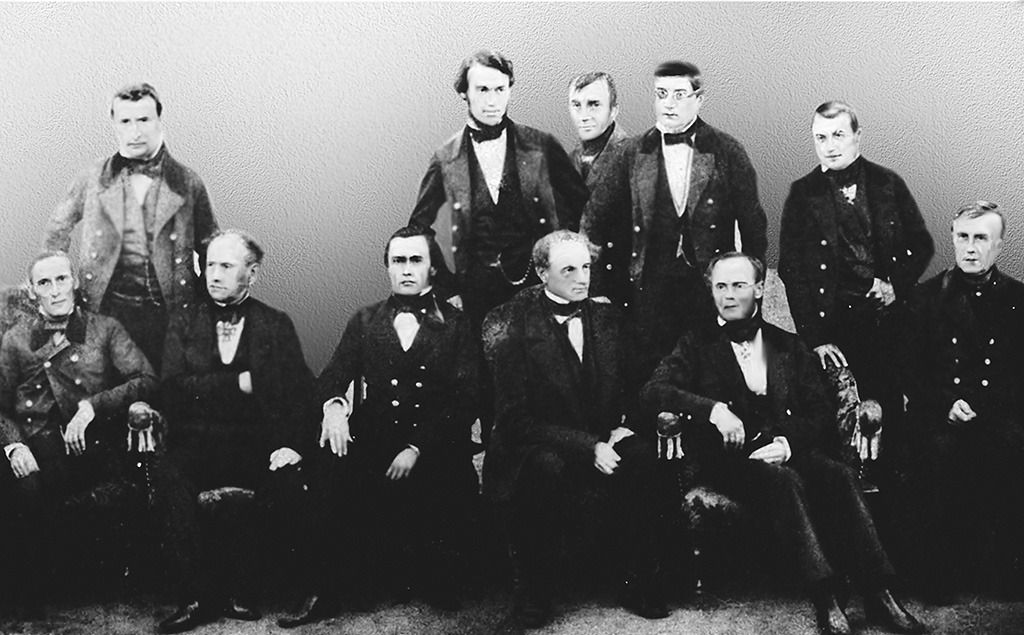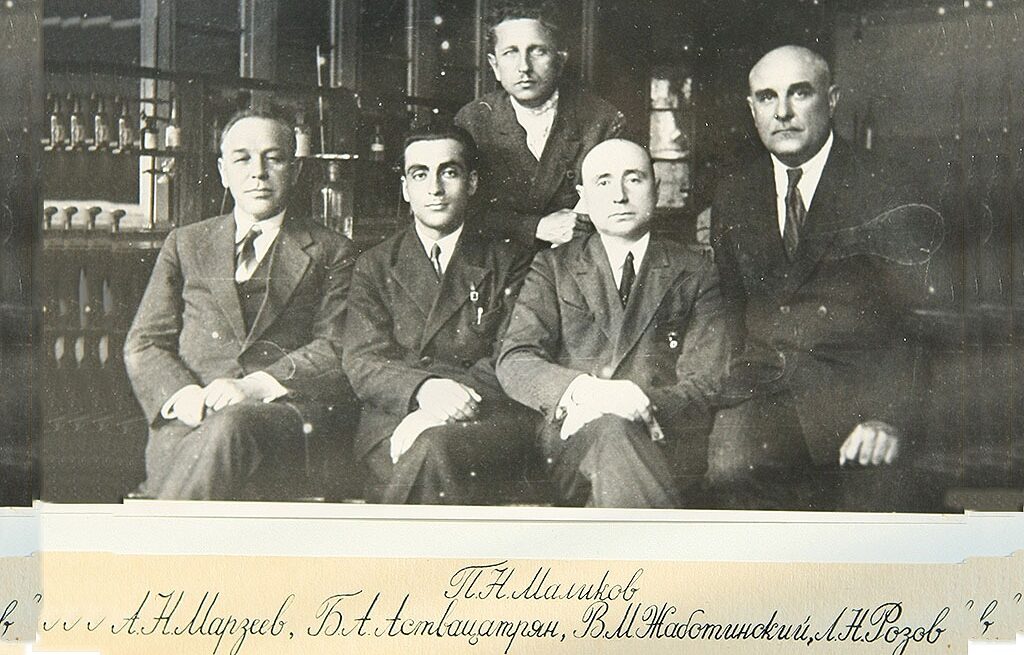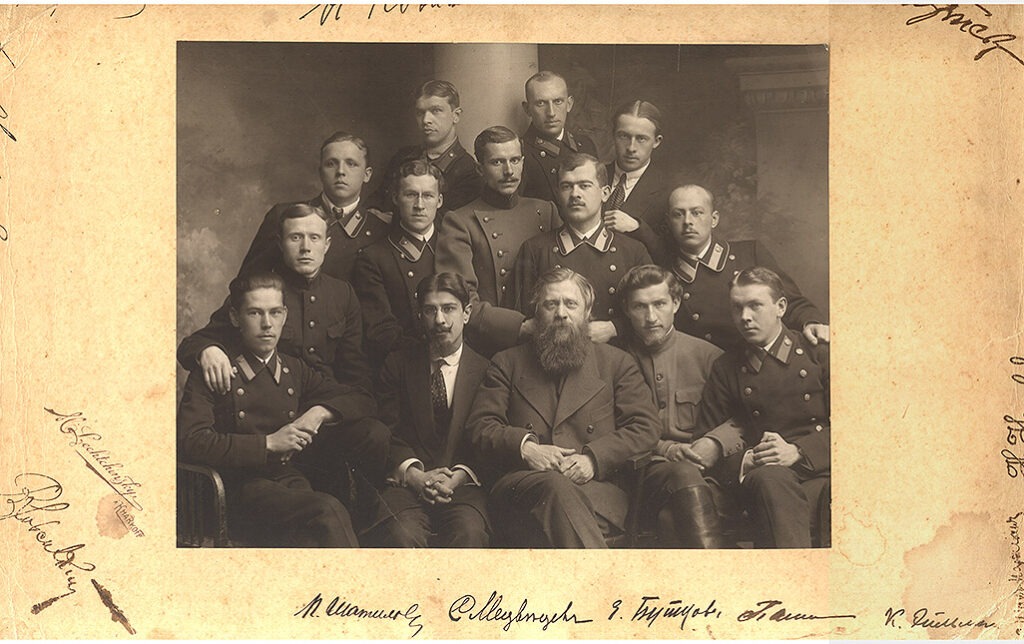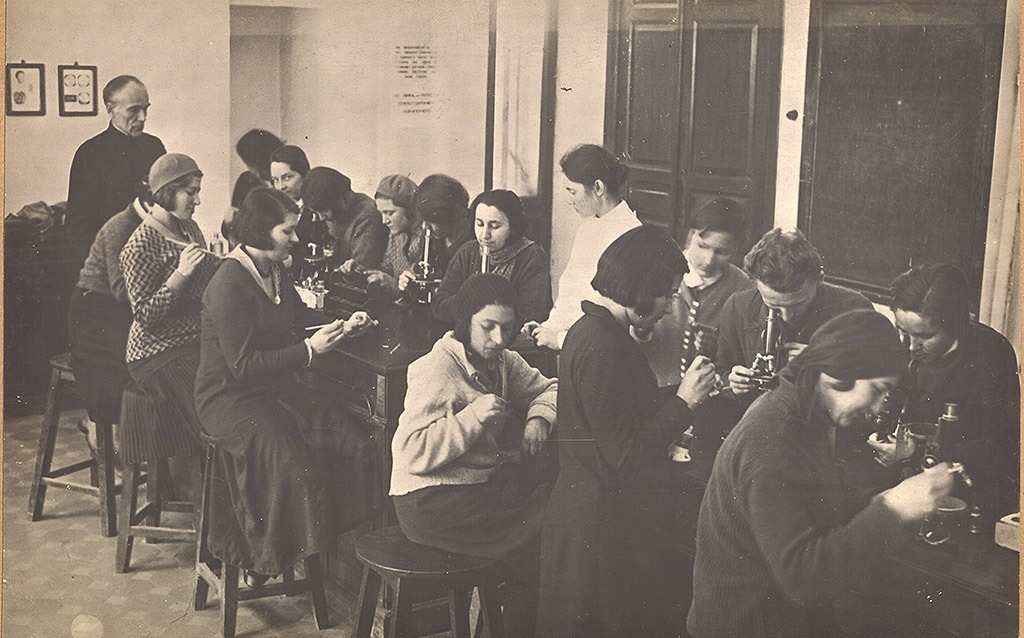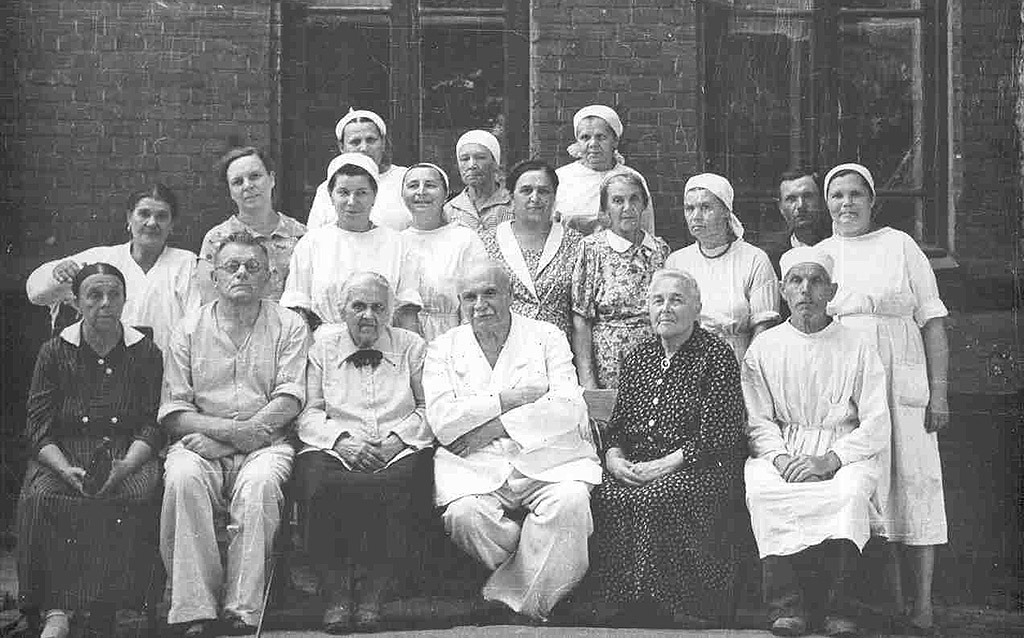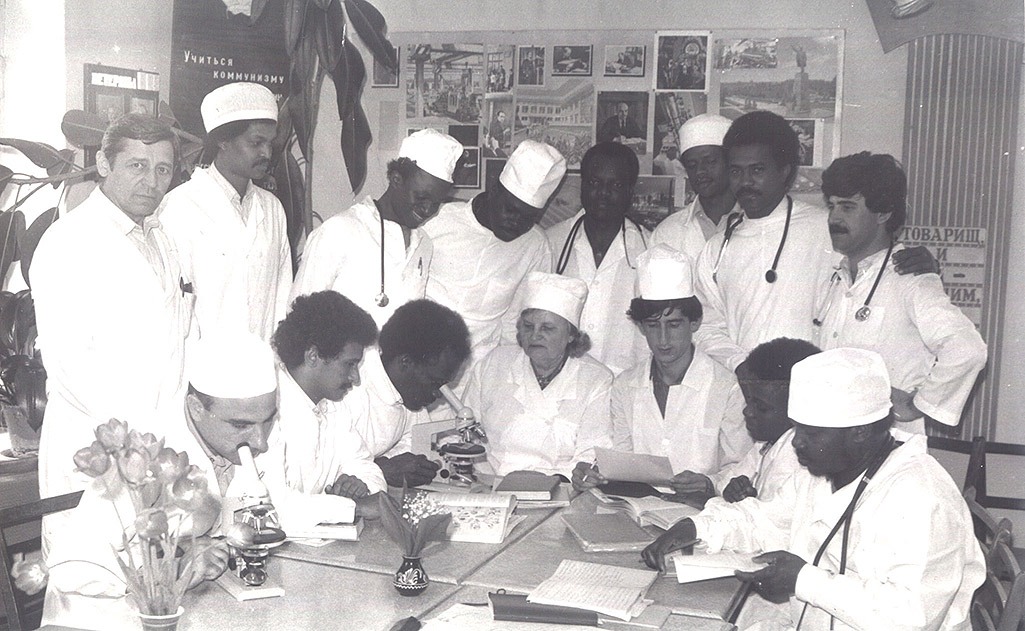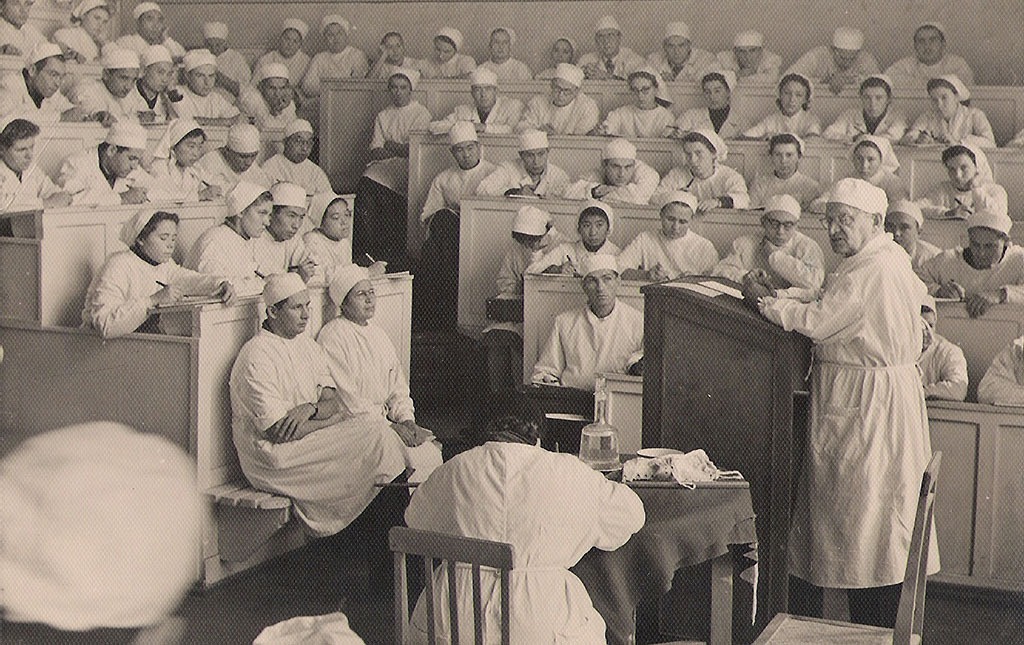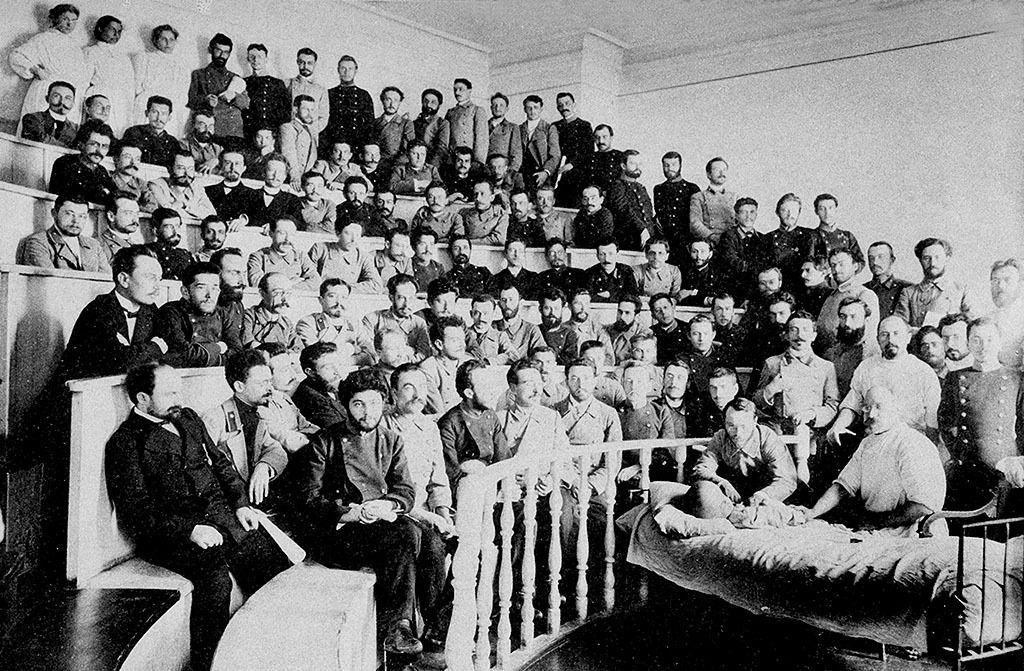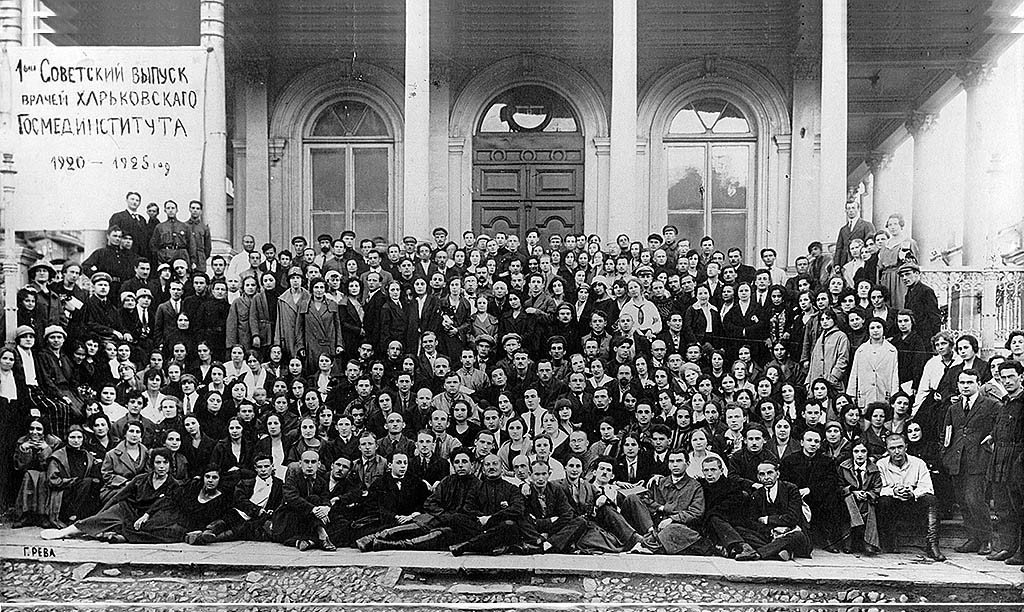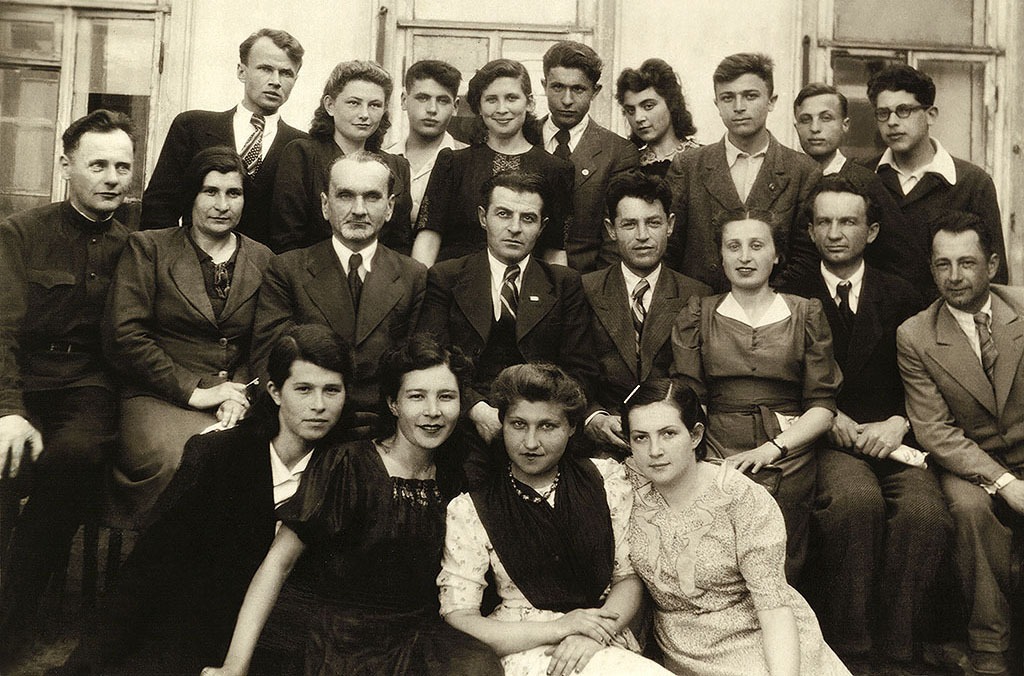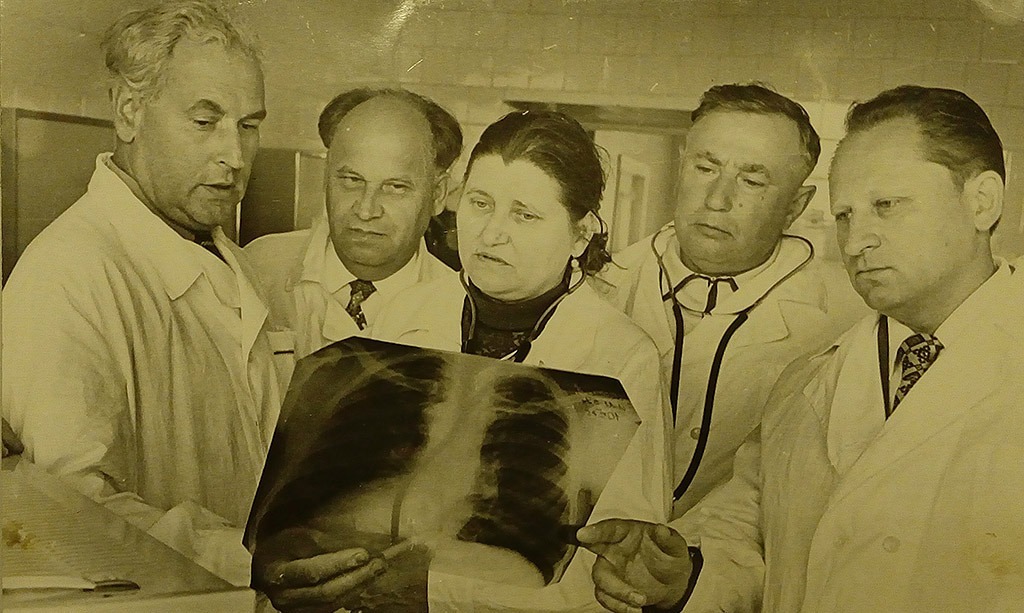- Obstetric clinic
- Anatomical theater (1887)
- Surgical clinic
- Clinic of Nervous Diseases of the Medical Faculty
- Therapeutic clinic of the medical faculty
Kharkiv National Medical University passed a glorious historical way from a faculty to a higher education institution that trains not only highly skilled physicians, but also pedagogical and scientific personnel for medicine.
The history of higher medical school in Kharkiv counts more than two centuries. It is closely connected to the history of the Imperial Kharkiv University, from the medical faculty of which Kharkiv National Medical University originated.
At the medical faculty there were widely known scientists such as professors D. Liambl, L. Tsenkovskyi, I. Shchelkov, V. Krylov, I. Lazarevych, V. Lashkevych and others. They laid the foundations of national science. Here professors: surgeons A. Podriez and M. Trinkler, therapist P. Shatilov, ophthalmologist L. Girshman, physiologist V. Danilevskyi and many others received education and became leading specialists in various fields of medicine. It was the professors of the Medical Faculty who performed the first ovariotomies, total stomach resections and heart operations in the Russian Empire.
Top representatives of the medical faculty of the Imperial Kharkov University played a prominent role in the development of Kharkiv. They rendered qualified medical aid to the military, the wounded during wars, and to the civilians in case of epidemics.
In 1887 a special building for anatomical theatre was constructed for the Faculty of Medicine and in 1896 four separate clinics for therapy, surgery, obstetrics and ophthalmology were constructed.
At the initiative of professors of the Faculty of Medicine Kharkiv Medical Society was formed which is still in existence today. In 1910 the Society opened the Women’s Medical Institute in Kharkiv.
In 1920, the Imperial Kharkiv University was abolished. Its medical faculty was merged with the Women’s Medical Institute of KhMS to form Kharkiv Medical Academy. In 1921 it was renamed Kharkiv Medical Institute, which had two departments: Preventive Medicine and Odontology. In 1936 the 2nd Medical Institute in Kharkiv was established; besides the preventive medicine faculty it included psychoneurologic faculty.
Among teachers of both medical institutes there were distinguished scientists, academicians and professors: anatomist V. Vorobiov, the author of “The Atlas of Human Anatomy”, which was used to teach several generations of Soviet doctors; physiologist V. Palladin – founder of the Institute of Biochemistry, which now bears his name; distinguished professors: M. Trinkler – an outstanding surgeon, pioneer of asepsis in Kharkiv, and M. Bokarius – founder of the criminalistic direction in forensic medicine; neurologist O. Grinstein and pathologist M. Melnykov-Razvedenkov, microbiologist M. Tsekhnovitser and pharmacologist O. Cherkes, hygienist O. Marzeiev, dentist Yu. Gofung and many others.
- V. Danilevskyi
- M. Trinkler (1911)
From the first days of the Second World War, some teachers and graduate students went to the front, the institutes were sent to evacuation, where they continued to train doctors which were so necessary both at the battle-front and in the home front. In 1944 they were re-evacuated to Kharkov and merged into one institute.
Peaceful life of the Institute began with the restoration of the destroyed educational base and the improvement of the learning process. In 1949 the Institute was switched over to a six-year training period. In the jubilee year of 1955 the Institute had 53 departments headed by 43 professors and doctors of sciences and 10 associate professors. There were more than 3.5 thousand students studying at the institute at three faculties.
During those years the Institute was under the jurisdiction of the Ministry of Public Health of the USSR and had a high professional status. The Institute was headed by B. Zadorozhnyi – Honorary Professor of the Academy of Medicine of Poznan. The Departments were headed by M. Soloviov, Full Member of the USSR Academy of Medical Sciences, M. Zadorozhnyi, D. Derkach, V. Bielousov, Ye. Popov, Corresponding Members of the USSR Academy of Medical Sciences, D. Alpern, A. Utevskyi, Ye. Prykhodkova, Corresponding Members of the USSR Academy of Sciences, USSR State Prize Laureate B. Alyoshin, Honored Scientists of the USSR, Professors: I. Braude, G. Derman, M. Kharchenko and others.
In 1978, the fourth – dental faculty – was established at KHMI.
- Board of Professors of the Medical Faculty of Kharkiv University
- In the anatomical theater of the Women’s Medical Institute (1912)
- Employees of the Institute of Public Hygiene
- (1910)
- In the laboratory
- (1942)
- In a practical malaria class with foreign students
- Lecture
In 1994, by the Resolution of the Cabinet of Ministers of Ukraine, Kharkiv State Medical University was established on the basis of KhMI. Our Institute was one of the first medical schools in Ukraine to become a university, to pass the accreditation and to be included in the State Register of Educational Institutions, granting it the license for the right of educational activity on the 4th, the highest level.
In 1998 Kharkiv State Medical University was accepted as a member of the International Association of World Universities, registered under UNESCO.
In 2007 by the Decree of the President of Ukraine the university received the status of a national university.
In 2006 a number of divisions were created within the University: – Ukrainian Institute of Clinical Genetics of KhNMU; State Institution “Specialized medical and sanitary unit No.12”. (since 2015 – TRMC “University Clinic of KhNMU”); University Dental Clinic (since 2008 – University Dental Centre of KhNMU); Kharkiv Research Institute of Occupational Hygiene and Occupational Diseases.
Kharkiv National Medical University is a modern multidisciplinary educational institution with strong scientific, material and technical base, which was awarded with the Diploma of the Cabinet of Ministers of Ukraine.
Today the University consists of:
– 8 faculties: the 1st, 2nd, 3rd and 4th Medical Faculties; Dental Faculty; The 5th Faculty on Training Foreign Students at the Training and Research Institute for Foreigners; the 6th and 7th Faculties for International Students of KhNMU Education and Research Institute for Foreign Nationals (2017);
– Training and Research Institute for the Quality of Education (2006);
– Training and Research Institute of Postgraduate Education (2011), which provides continuing professional education for physicians and scientists during internship, master’s degree, clinical residency, postgraduate and doctoral studies;
– 70 departments with a high level of human resources, namely: 1000 scientific and pedagogical staff, among which 130 employees have the title of professor, 301 – associate professor, 146 – doctor of medical sciences, 588 – PhD; among them: academician of NAMS of Ukraine, 5 corresponding members of NAMS of Ukraine, 15 Honored Science and Technology Workers of Ukraine, 17 Honored Doctors of Ukraine, Honored pharmacistof Ukraine, 3 Honored educators of Ukraine, 9 winners of State Prize of Ukraine in science and technology, 21 members of state and public academies of Ukraine.
More than 8 200 students, interns, masters, clinical interns, postgraduates and PhD study at the University, among them over 4 thousand foreign citizens from 73 countries of the world.
There are five Specialized Academic Councils for defending doctoral and PhD theses in the following fields: “Obstetrics and Gynaecology”, “Surgery”, “Urology”; “Dentistry”, “Anaesthesiology and Intensive Care”, “Clinical Laboratory Diagnostics”; “Human Anatomy”, “Pathological Anatomy”, “Pathological Physiology”, “Forensic Medicine”; “Internal Medicine”, “Pediatrics”, “Cardiology”, “Nephrology”; “Hygiene and Professional Pathology”, “Social Medicine”.
There are 18 actively working scientific and pedagogical schools.
- Hospital surgical clinic (1890)
- The first Soviet issue (1925)
- Teachers with students (1942)
- Inventors are advised
- Lecture (1970)

